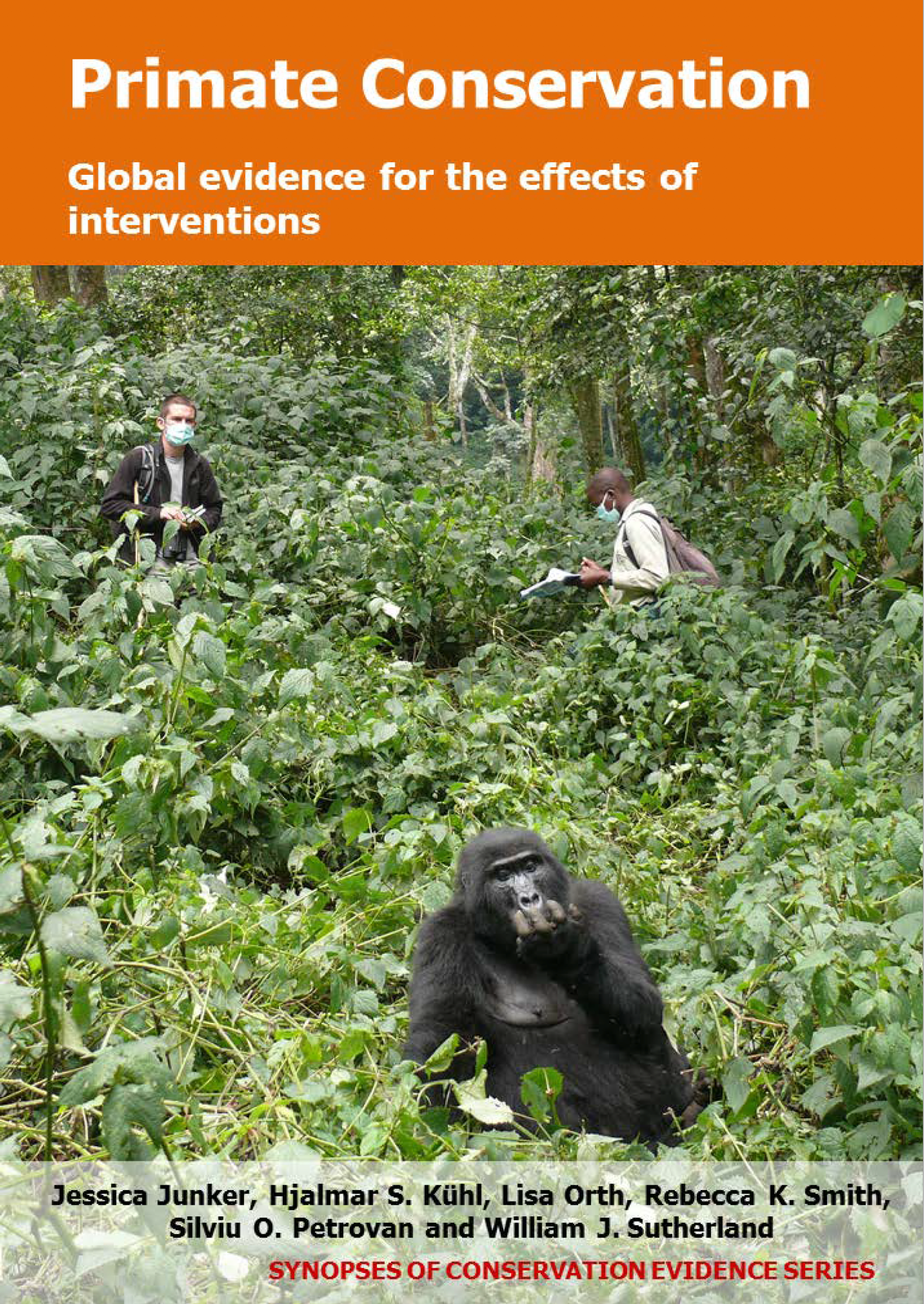Implement continuous health monitoring with permanent vet on site
-
Overall effectiveness category Unknown effectiveness (limited evidence)
-
Number of studies: 1
View assessment score
Hide assessment score
How is the evidence assessed?
-
Effectiveness
60% -
Certainty
20% -
Harms
0%
Study locations
Supporting evidence from individual studies
A controlled, before-and-after study in 1967-2008 in tropical montane forest in Volcanoes-, Mgahinga-, and Virunga National Parks in Rwanda, Uganda, and the Democratic Republic of Congo found that a mountain gorilla Gorilla beringei beringei population that was continuously monitored by vets alongside ten other interventions, increased in size over time. Annual population growth was 4.1%, resulting in an overall population increase of 168% over 41 years. No statistical tests were carried out to determine whether this increase was significant. Veterinary treatment for snares, respiratory disease, and other life-threatening conditions explained up to 40% of the difference in growth rates between this population and another population in the same area, which did not receive veterinary care. The remaining 60% were likely due to increased protection against poachers. As part of an ecotourism- and research project, gorillas in the treatment population were habituated to human presence where visitors/researchers had to follow strict health procedures; these included keeping a safety distance to the gorillas, wearing face-masks, spending only limited amounts of time with gorillas, ensuring that visitors/researchers were healthy and disinfecting visitor’s/researcher’s clothes, boots etc. Dead gorillas were clinically examined. The study does not distinguish between the effects of the other interventions mentioned above
Study and other actions tested
Where has this evidence come from?
List of journals searched by synopsis
All the journals searched for all synopses
This Action forms part of the Action Synopsis:
Primate Conservation
Primate Conservation - Published 2017
Primate Synopsis





)_2023.JPG)














